Growing Green with the Zodiac: Cancer Season 2025
Toward an Ecological Astrology
Apologies! Last Friday, some of you received an unfinished draft of this post, sent inadvertently. This is the finished post—if you received the draft, please discard.
Growing Green with Cancer is the 11th in a series of 12 almanac posts in which I’m using the astrological paradigm—the ancient view that planets, people, and plants are all part of a single cosmic whole—as a lens to view our current ecological and environmental crisis. I hope these posts encourage us to pay more thoughtful attention to Planet Earth, especially now that the new U.S. administration seems hellbent on steamrolling the environmental policies hammered out over the past two dozen years. It’s no exaggeration to say that our lives—and the lives of our children and their children—depend on maintaining the health of our home planet.
What you are reading is the working draft of what may (or may not, depending on my energies) become a book. The AI collaborator I use for this series is a chatbot I call Hildi.1 Not your cuppa? Not a problem! Go here to select what you receive from Thyme, Place & Story.
Cancer Season. June 20-July 22
Cancer’s guardian planet is the Moon, our nearest celestial neighbor and Earth’s oldest companion. Her presence is intimate, her cycles visible even to the naked eye, and her gravitational pull directly responsible for the tides that animate our oceans and more. In astrology, the Moon governs emotion, instinct, memory, and the rhythms of daily life. But from a Gaian perspective, she is much more: she’s Earth’s regulator, synchronizer, and quiet orchestrator of biological time.
The Moon shapes not only water levels, but plant growth, animal behavior, and human emotion. Lunar-sensitive species—including us—time their lives around her phases. And through her endless waxing and waning, the Moon teaches something profound: change is not a disruption, but the pattern itself.
Now, in 2025, Cancer is hosting a powerful guest: Jupiter, planet of expansion, insight, and collective vision. Jupiter visits Cancer only once every 12 years and will be gone by the end of next June. In this watery, maternal sign, Jupiter’s gifts flow toward nourishment, emotional intelligence, and the sanctity of home.
But Jupiter doesn’t always teach gently. He enlarges whatever he touches—sometimes beyond comfort. In Cancer, that could mean amplified emotions, surging nostalgia, or overwhelming caretaking burdens. Homes may feel crowded—not just physically, but psychically. Family legacies could surface, requiring integration or release. Jupiter asks us to grow into the full meaning of care—and that may involve setting boundaries, searching for clarity, and dealing with grief.
There’s more. Jupiter governs both wisdom and weather. In a time of climate extremes, rising tides, and displaced communities, this transit may confront us with the shadow side of Cancer: fear of invasion, protectionism, and the illusion that safety can be hoarded. Jupiter says: it’s time to outgrow the shell. Expand the definition of family, of home, of community, of belonging.
Under this sky, we’re asked to think harder about kinship and responsibility. What if “home” includes watershed and soil biome, pollinators and neighborhood trees? What if our emotional labor is part of Earth’s immune system? Jupiter says: stretch your circle of concern. Cancer adds: and tend to it like your life depends on it—because it does.
Cancer’s symbol: the Crab
Cancer’s symbol: the crab. Crabs are armored yet sensitive. They carry their homes with them, adapting to tides and sheltering in-between spaces. The crab’s sideways walk suggests Cancer’s indirect nature: this sign doesn’t move in straight lines—it circles, feels its way, and leads with intuition.
In myth, the crab appears in the tale of Heracles, where it sacrifices itself to defend the sea-serpent Hydra. As reward, Hera places the crab in the sky—underscoring Cancer’s role as quiet protector and loyal defender. In ecological terms, Cancer represents the caretakers and the stewards—those who guard what’s vulnerable, tend what’s tender, and hold the line when others retreat.
Cancer’s reciprocity is deeply embodied: it feeds what feeds it. Think of breastmilk, compost, kitchen gardens, mycorrhizal relationships. Cancer teaches that emotional labor, like ecological care, is never wasted. All nourishment is part of the great cycle.
Cancer’s Element/Modality: Cardinal Water. Water is the element of emotion, memory, and flow. Cardinal signs initiate action—and Cancer initiates care. This is the sign that feels first and acts out of feeling: to nurture, to defend, to preserve. Where Scorpio plumbs the depths and Pisces dissolves boundaries, Cancer gathers and protects. This is water as vessel: womb, well, watershed.
Cancer’s home in the Zodiac is the 4th House, the house of home, ancestry, and belonging—where we root, nest, remember, and return. In Cancer, it becomes a womb-space: sheltering, protective, gestational. It holds the memory of where we came from and the conditions we need to grow.
Seen through Gaia’s lens, this isn’t just personal: it extends to all life. The womb is the ocean, Earth’s original cradle of living creatures. Salt runs in our blood because we carry the sea in our veins. The Moon, Cancer’s ruler, still pulls the tides—and all our rhythms—with her.
With Jupiter now in Cancer, this house is under threat. What happens when the oceans rise? When home becomes unstable—due to climate, displacement, grief? Jupiter teaches through amplification: what we cherish may overwhelm us before it transforms us.
Cancer teaches us to care. Jupiter challenges us to do it at scale. To belong now is to respond—to extend kinship, expand protection, and discover new forms of shelter in this changing world.
Cancer folk (those with the Sun, Moon, Rising Sign, or a cluster of planets in Cancer, and/or a strong Moon or 4th House emphasis, or placements in the other Water signs—Scorpio or Pisces) are nurturing, intuitive, protective, and attuned to emotional undercurrents. They are natural caretakers—drawn to family, memory, healing, foodways, and work that centers home, belonging, and the preservation of life.
When it comes to green, Cancer folk are the stewards, home gardeners, kitchen-witches, and caretakers of the ecological movement. They tend to the roots—restoring watersheds, saving seeds, and creating sanctuaries for both humans and nonhumans. They may be drawn to herbalism, food justice, conservation, and ancestral land practices. Whether they’re caring for coastal wetlands, building mutual aid networks, or cooking meals from the garden, Cancer folk remind us that sustainability begins at home—and that care is a radical ecological act.
Four Cancer Earth Guardians
Cancer energy often expresses through care—of kin, of place, of future generations. These four Cancer-born environmentalists show what happens when nurture meets action.
Erin Brockovich (June 22, 1960), Sun, Mercury, Venus in Cancer. A paralegal, Brockovich became an environmental activist when she helped convict Pacific Gas & Electric of groundwater contamination. Her work shows how passionate local care—classic Cancer—can ripple into systemic change.
Saalumarada Thimmakka (June 30, 1911—114 years old!) This Indian environmentalist planted over 8,000 trees—beginning with 384 banyans along a dusty stretch of highway, using water she carried from home. Her story is pure Cancer: dedicated maternal care extended to the Earth itself.
Henry David Thoreau (July 12, 1817). Sun, Moon, Mercury in Cancer. Naturalist, writer, and early advocate of simple living, Thoreau helped seed America’s conservation ethic. He treated nature not as backdrop, but as kin—a deeply Cancerian sensibility.
Linda K. Hogan (July 16, 1947). Sun, Moon, Mercury, Venus, MC in Cancer. This Chickasaw literary artist brings a deeply relational concern to ecology and culture. Her Dwellings: A Spiritual History of the Living World, is a luminous Cancerian text—rooted, protective, and full of reverence for home.
Cancer Season in the Green World
Throughout this series, we’ve been exploring how cosmic archetypes can take root in the garden. Here are five gardening strategies that reflect Cancer’s 4th House themes of care, belonging, emotional intelligence, and cyclical wisdom. Use these ideas to create a garden that feels like sanctuary—restorative, rooted, and full of quiet magic.
1. Build a Garden Womb
Cancer is the cosmic womb: sheltering, gestating, holding what matters. Design a protected space within your garden where tender plants and sensitive humans can feel safe. Try windbreaks, hedges, stone borders, or vertical vines to create a sense of enclosure. Think curves over corners. Add a chair, an altar, a shaded bench. This is your garden’s center of gravity—a place to return to, and rest in.
2. Plant for the Table—and the Pantry
Cancer rules food, comfort, and continuity. This is the season to grow what nourishes you deeply: tomatoes for sauce, cucumbers for pickles, calendula for skin balm, basil for pesto. Plant with preservation in mind. What will you dry, freeze, infuse, ferment? What becomes part of winter stews, healing teas, or next season’s gifts? A Cancerian garden feeds not just the day but the year ahead.
3. Honor Water
Cancer is cardinal water—emotion in motion. It rules the Moon, tides, and all the subtle flows that shape life. Make your garden water-aware: install a rain barrel, mulch deeply to conserve moisture, build a berm or swale to manage runoff, add a birdbath, fountain, or water bowl for pollinators. Water is memory. Let your garden remember the rain.
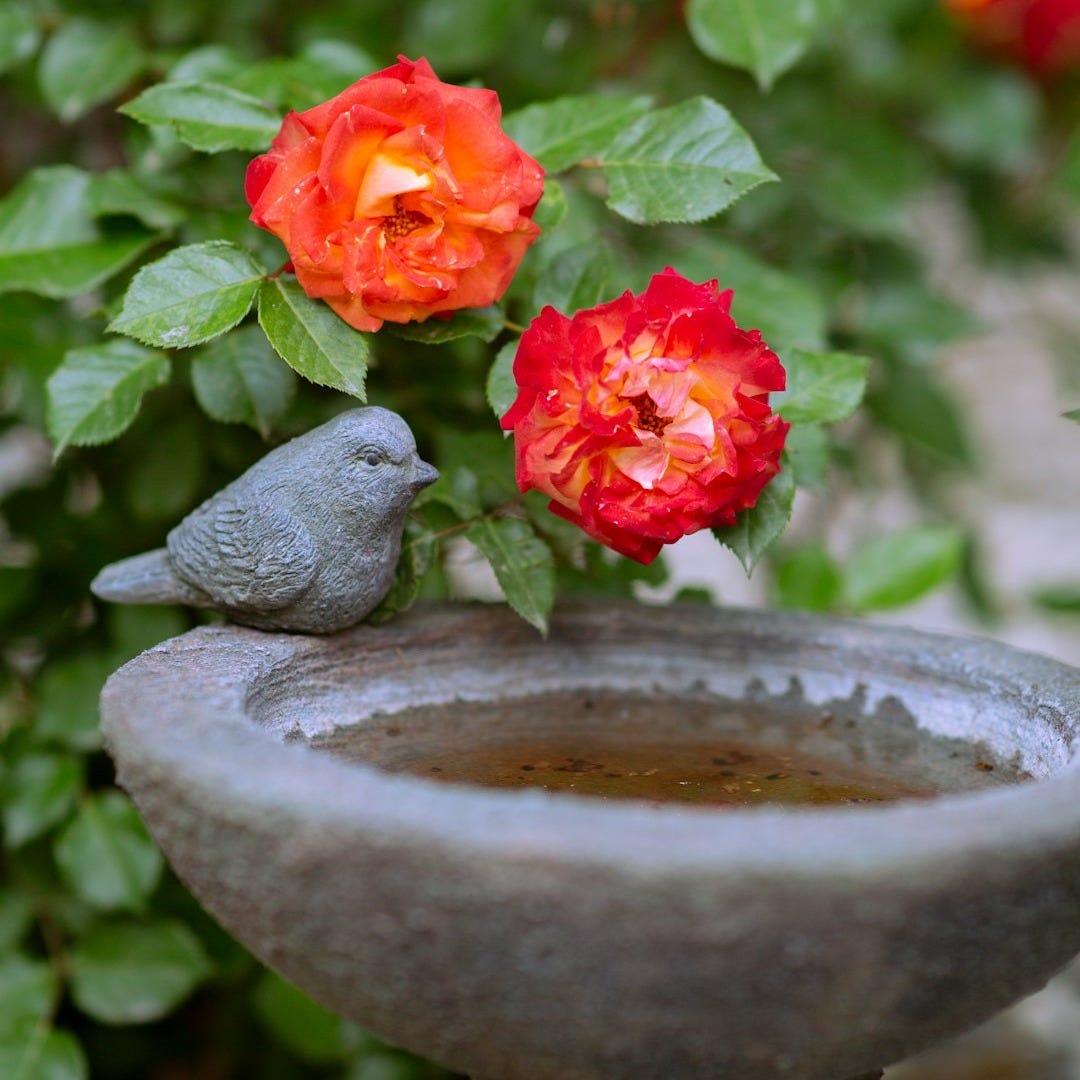
4. Grow Memories
Cancer is ruled by the past—and by the stories we carry. This is the time to plant something that connects you to ancestry, family, or place. Maybe your grandmother’s roses, your aunt’s dill, the zinnias from your first apartment balcony. Or something native to the land you live on now. Memory plants root us where we are and where we came from. Label them if you want, or simply say their names aloud as you plant. That counts as a spell.
5. Tend a Moon Garden
The Moon rules Cancer—and gardening by the Moon is an ancient practice. Try planting a few white or night-blooming flowers (moonflower, jasmine, datura, nicotiana) and watch the garden shimmer after dark. Observe how your plants respond to the lunar cycle. Observe how your relationship to the land is deepend by your own moods and energies throughout the lunar month. Cancer teaches that tending includes feeling and feeling begs to be observed.
Gardening by the Sun in Cancer Season
Cancer season is peak garden time in many regions—plants are thriving, harvests are beginning, and water becomes precious. This is a month for tending, preserving, and protecting. The garden’s emotional tone shifts here, too: we’re less in planning mode, more in relationship. These tasks invite us to listen, adapt, and care for what’s growing—inside and out.
Feed and Water Thoughtfully. In hot regions, rainfall may be scarce this month. Deep water early in the morning, and mulch heavily to reduce evaporation. Watch for signs of thirst and stress—not just in plants, but in pollinators and soil life. This is also a good time to feed hungry summer crops like tomatoes, squash, and peppers with compost tea or a gentle fertilizer.
Tuck in Second Plantings. In most zones, you still have time to sow a second round of beans, cucumbers, basil, and squash for late summer harvest. In cooler zones, start fall crops like kale, broccoli, or chard. Cancer’s energy says: don’t just rest on what you’ve planted—keep caring.
Begin Harvesting for Preservation. It’s not just about eating fresh. Begin drying herbs (hang bunches in a shady, breezy spot), freezing berries, or starting infusions. Cancer values continuity—think ahead to winter teas, herbal salts, tinctures, and vinegars. A little extra now becomes healing later.
Watch for Pests—And Protect Gently. High summer brings hungry insects and opportunistic critters. Use Cancerian intuition: observe before acting. Try cloth barriers, neem, or homemade soap sprays before reaching for anything harsher. Protection doesn’t have to mean harm.
Weed (but don’t obsess). Weeds thrive this time of year, but not all are bad. Some improve soil, offer nectar, or even serve as herbal allies or companion plants. Get to know who’s who. Focus on what’s crowding your crops or going to seed—and leave space for a few guests, especially pollinator-friendly ones.
Create Garden Shelters. Everything needs refuge. Leave brush piles or tucked-away corners for beneficial insects, frogs, or small wildlife. Add a shaded spot for a rest bench and find a place to stash your tools. Cancer teaches: tending includes offering shelter.
Gardening by the Moon in Cancer Season
The Moon’s phases. In traditional practice, the waxing Moon’s growing light encourages leafy growth and the rise of moisture and sap, while the waning Moon’s decline supports root development and underground activity. Each waxing and waning period lasts about a week—an ideal time frame for observing the ways your plants might respond.
The Moon’s signs. As the Moon cycles through her phases, she also moves through the zodiac, spending about two and a half days in each sign. These signs lend their elemental character and planetary tone to the moment, influencing which gardening tasks are most aligned with nature’s rhythm—whether planting, watering, harvesting, or letting the soil rest. Cancer, ruled by the Moon herself, heightens this intuitive bond with lunar time. To garden with the Moon is to return to an ancient practice of care and attunement—one that honors the Moon as Earth’s first calendar, and the gardener’s oldest guide.
If you’d like to learn about gardening by the Moon’s signs and phases, this is helpful: Garden Alchemy: Growing with the Phases of the Moon, by Samuel McKay. You’ll find a calendar and chart on Astro-seek.com. I’ve set this Astro-seek link for the beginning of Cancer in June; you can reset it (top left) as the Moon moves into July.
Indoor Gardening in Cancer: The Kitchen-Witch’s Windowsill Herb Garden
Cancer rules the kitchen, the hearth, and the deep magic of nourishment. Whether you’re simmering soup, steeping tea, or setting protective wards with rosemary over the doorway, these seven herbs are the heart of a Kitchen-Witch’s Windowsill Garden—comforting, healing, and ready for to serve in quiet spells.
Basil. Sweet, spicy, and sun-loving, basil brings warmth and generosity to the table. Pinch regularly to keep it bushy, and keep it warm—basil hates cold drafts. A favorite for pesto, pasta, and abundance rituals.
Rosemary. A herb of memory and protection. Needs good drainage and plenty of sun. Use fresh in roasts, breads, or infused in oil for cooking and anointing. Spiritually linked to homecomings and grief work—a sturdy lunar ally.
Mint. Cooling, comforting, and easy to grow (almost too easy—contain its enthusiasm!). Use in teas, salads, syrups, or calming tinctures to soothe the stomach and clear emotional clutter.
Sage. Grounding and aromatic, sage thrives in dry air and strong light. Excellent for savory dishes and herbal smudging. Use with intention—it’s a sacred herb, tied to wisdom, purification, and ancestral guidance.
Chives. Mild onion flavor, slender and adaptable. Grows well in pots and bounces back from frequent trimming. Adds color and a gentle bite to eggs, soups, and salads—Cancer’s comfort foods.
Oregano. Sturdy, antimicrobial, and strongly flavored—oregano brings warmth and a little fire. Let it dry out between waterings and harvest often to encourage growth. Use in stews, sauces, and protection brews.
Thyme. Tiny leaves, big magic. Thyme enhances immunity and flavor—try it with beans, roasted vegetables, or lemon-based marinades. Keep the soil lightly moist and give it sun. Traditionally associated with courage and restful sleep.
The Cancer Bookshelf: Five Currents of Care and Connection
Cancer season invites us inward—to reflect, remember, and reconnect with what sustains us. These five books resonate with Cancer’s watery, rooted nature: they speak of home, kinship, emotional memory, and the living intelligence of Earth. From rising seas to ancestral wisdom, from moonlight to homesteads, each offers a different way of understanding what it means to care—for place, for people, and for the planet we call home.
The Water Will Come: Rising Seas, Sinking Cities, and the Remaking of the Civilized World. Jeff Goodell (2017, Little, Brown). A sobering, deeply reported examination of how rising seas are already reshaping coastlines and displacing communities—essential reading as Jupiter challenges Gaia’s waters.
Our Moon: How Earth's Celestial Companion Transformed the Planet, Guided Evolution, and Made Us Who We Are. Rebecca Boyle (2024, Random House). A lyrical and scientific tour through the Moon’s role in shaping Earth’s oceans, life, climate, culture, and even our blood—no astrology (too bad—it’s such an important historical aspect of our understanding of our satellite. But otherwise a comprehensive read.
Dwellings: A Spiritual History of the Living World. Linda K. Hogan (1995, W. W. Norton). A poetic meditation on kinship with land, animals, and ancestors—profoundly Cancerian in tone and deeply rooted in reverence for home and belonging.
The Home Place: Memoirs of a Colored Man’s Love Affair with Nature. J. Drew Lanham (2016, Milkweed Editions). A lyrical reflection on land, identity, and belonging from a Black Southern ornithologist and thoughtful observer—Cancer themes of home, nurture, and heritage enrich every page.
The Nourishing Homestead: One Back-to-the-Land Family’s Plan for Cultivating Soil, Skills, and Spirit. Ben Hewitt (2015, Chelsea Green Publishing). A grounded, honest look at family-based homesteading—how it works, why it’s a challenge. Deeply rooted in soil, seasons, and Cancer’s ethic of care, self-reliance, and stewardship.
The Cancer Apothecary
As the ancients saw the cosmos, everything was connected. Each planet told its story through plants, people, and parts of the human body. The Moon—keeper of tides, rhythms, and the hidden life of the night—was said to rule the stomach, breasts, uterus, menstruation, and emotional tides. Cancer, the Moon’s sign, governs nourishment, protection, and the deep waters of feeling.
Plants ruled by the Moon were used to soothe the belly, calm the heart, ease menstrual discomfort, and help the nervous system flow more gently. These are herbs of holding, softening, and returning to center. Here are some examples.
Chamomile (Matricaria chamomilla). A gentle but powerful lunar ally, chamomile is a go-to herb for soothing digestive discomfort, menstrual cramps, and emotional distress. Its name comes from the Greek for "ground apple," and its scent carries comfort in every cup. As a nervine and mild sedative, it calms without dulling—perfect for Cancer’s emotional sensitivity. It’s also used topically for skin irritations and eye baths. Chamomile is the tea you make when someone’s crying, or can’t sleep, or just needs to feel safe again.
Motherwort (Leonurus cardiaca). This strong, slightly bitter herb metaphorically speaks to the fiercely protective side of maternal care. Traditionally used to regulate menstruation, ease anxiety, and support the heart (both literal and emotional), motherwort is not as gentle as chamomile—but she gets the job done. Excellent for mood swings, hormonal turbulence, and emotional overwhelm. In energetic herbalism, she’s known to restore boundary and inner backbone. Motherwort is for when comfort needs structure.
Black Cohosh (Actaea racemosa). Dark and mysterious, black cohosh has long been used to address menstrual and menopausal symptoms, from cramps to hot flashes to mood fluctuations. It’s a deep root—slow to act, but steady—and was traditionally given to ease labor pains and support uterine tone. Cancer’s lunar rulership over cycles and change makes black cohosh a fitting ally for life transitions. This herb is not for casual use, but in practiced hands, it’s a potent ally for moving through the thresholds.
Lemon Balm (Melissa officinalis). Bright, lemony, and beloved by bees, lemon balm is a Cancer classic—a gentle nervous system ally that lifts the mood, eases anxiety, and soothes digestive upsets. It’s especially helpful for emotional states that affect the stomach (Cancer's vulnerable zone) and has mild antiviral and thyroid-supporting qualities. In the garden or the teacup, lemon balm brings a feeling of light in the dark. Think of it as lunar sunshine in leaf form.
That’s it for Cancer season, friends. I’ll be back later this week with a post on the ownership of local newspapers, and why that matters. Then next Monday, June 23, to open our discussion of Collision of Power, the June book in our Guerrilla Readers read-along. If you’ve started reading, I’m sure you’re seeing the book’s relevance to our current situation.
Paid subscribers, your Cancer Workbook is coming in a separate email later this morning. (I intended to finish it in time for an earlier mailing, but a thunderstorm has intervened.) It includes a reading of the Gaian Tarot for Jupiter’s year-long transit of Cancer, journaling prompts, project ideas, and (yes, of course) a visit to Cancer’s kitchen.
For the Zodiac project, I’ve named my AI collaborator Hildi, after Hildegard of Bingen, the 12th-century Benedictine abbess, herbalist, composer, and visionary whose work bridged natural science, theology, and cosmology—a woman far ahead of her time. She helps by generating images, pointing out patterns I’ve missed, checking sources, and opening our inquiry in new directions. This is an experiment in collaborative thought, active imagination, and some role-play thrown in for fun. Hildi is part research assistant, part chronologer of the stars, part witness to Gaia’s green memory. When I asked her how she would like us to visualize her, here is the image she created. It makes me smile.


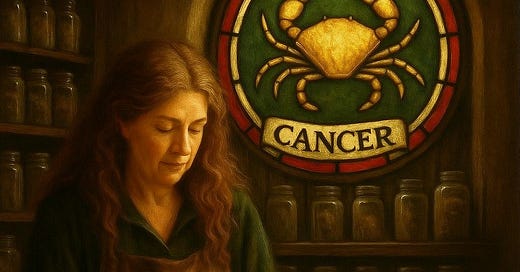





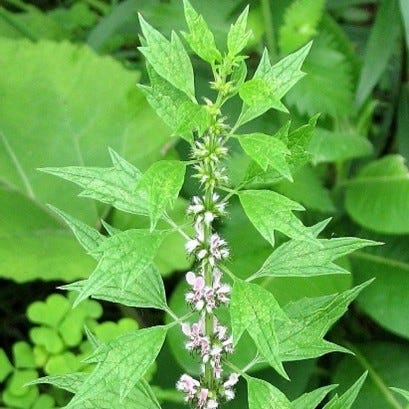
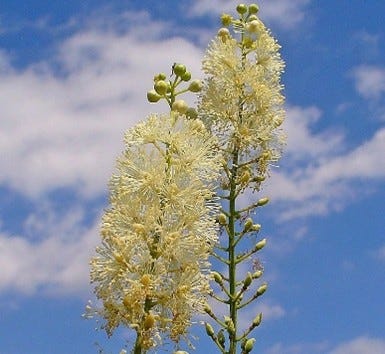
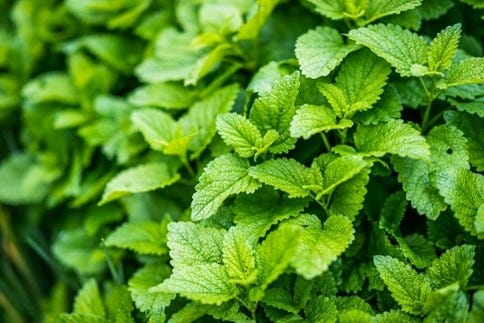

I love that you write 'Cancer initiates care'. My three children have strong Cancer (daughter is a Cancer Sun, older son has Cancer midheaven with both Mars and Venus there, younger son is a Cancer rising and Moon) and I often saw them jumping in first to care for another child who was crying or hurt!
Susan, I love the idea of a memory garden, so appropriate for the Cancer season of gathering and nurturing. We all need the caring energy of Cancer this month as the world edges toward greater chaos. Peace to you.